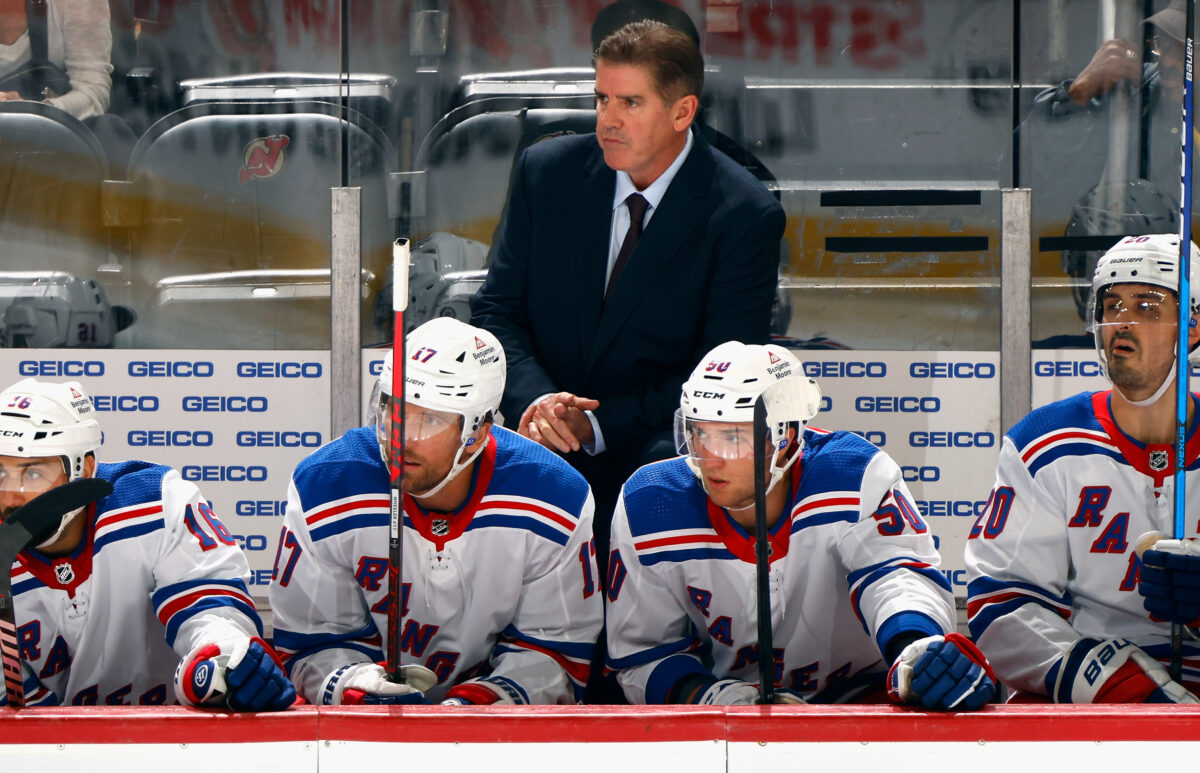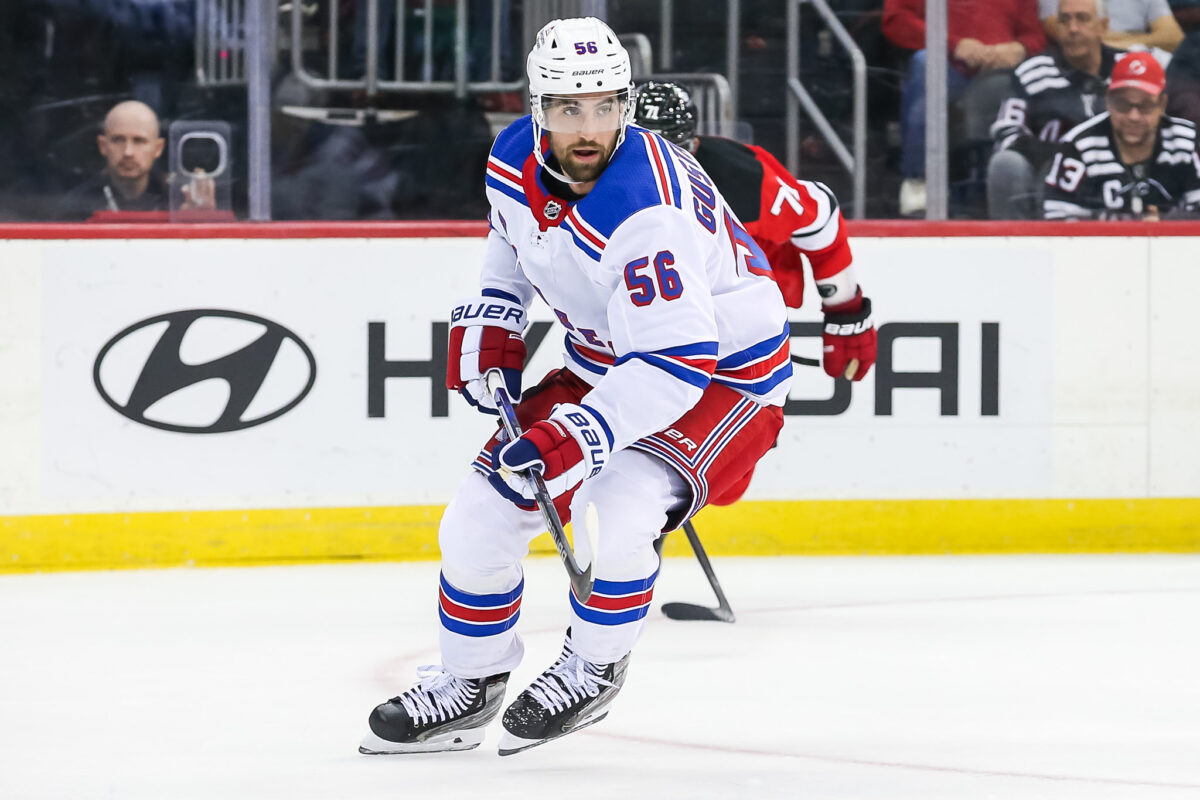To begin the 2023-24 NHL season, the New York Rangers were a formidable force in special teams performance. As it stands, their power play efficiency is an impressive 28.7 percent, ranking them second in the league. Meanwhile, their penalty kill success rate is 82.2 percent, placing them ninth. This combination has positioned the Rangers tied for third in the league with a combined special teams percentage of 110.9 percent.

However, a closer examination of the Rangers’ special teams reveals a recent dip in their effectiveness. In the first 20 games of the season, they boasted a remarkable power play success rate of 30.2 percent and an 86.2 percent rate of killing penalties, contributing to their strong 15-4-1 start. After their Nov. 27 game against the Buffalo Sabres, these numbers have taken a turn for the worse.
Over the next 24 games, while their power play percentage remained strong at 27.4 percent, their penalty kill rate dropped to 78.1 percent, which is below the league average of 79.4 percent. This decline in special teams performance played a part in their less successful 13-10-1 record in this period. This trend is even more noticeable in their last 10 games, as the Rangers’ power play effectiveness was 21.4 percent, and their penalty kill rate was 69.2 percent. This downturn in special teams performance has played a part in their 4-5-1 record over their last ten games. Clearly, the Rangers’ special teams success plays a huge part in their success as a team.
This downturn, to a more realistic power play, showcases how the Rangers’ elite unit on the man advantage masks the team’s key issues: a proclivity for poor defensive marking and reliance on stellar goaltending. If the Rangers are going to be a team that relies on their power play, they need to be a team with two strong units, as two strong units protect against the natural volatility that comes with the nature of power plays. The perfect example of this is the last ten games, where the Rangers’ power play has struggled, and as a result, the entire team has struggled. If they have two power play units, then one can still be scoring while the other is struggling.
Restructuring the Rangers’ Power Play: Embracing Change
The Rangers have predominantly relied on a singular power play unit since the 2020-21 season. During the 2020-21 and 2021-22 seasons, this unit comprised Artemi Panarin, Mika Zibanejad, Chris Kreider, Adam Fox, and Ryan Strome. In the subsequent seasons, Vincent Trocheck replaced Strome in the lineup. Consequently, emerging talents such as Alexis Lafreniere, Kaapo Kakko, and Filip Chytil have been limited in their power play opportunities, often deployed in the final seconds of a power play following an opposition clear.
With the acquisition of Erik Gustafsson, the Rangers now have two proficient power play quarterbacks at their disposal. This addition, along with the team’s existing offensive capabilities, suggests the potential for two effective power play units. Despite the success of the primary unit — ranking second-best in the league — there is a logical argument for restructuring. For example, by splitting up Panarin and Zibanejad, who are both right-handed shots, and adding either Kakko or Lafreniere, who are both left-handed shots, the Rangers could have two units that both have one-timer threats from both faceoff circles rather than just one threat from Zibanejad, which at times causes the unit to be one-dimensional.

The Rangers should consider different combinations consisting of the following players: Panarin, Fox, Lafreniere, Zibanejad, Kreider, Wheeler, Kakko, Gustafsson, Will Cuylle, and Jimmy Vesey. Additionally, if Chytil returns, which Larry Brooks of the New York Post thinks that he could return to practicing with the team by the All-Star Break, he could add another dimension, contributing playmaking skills and a quick shot release (from ‘Rangers should have one simple Kaapo Kakko message,’ New York Post, Jan 17, 2024).
Related: Rangers’ Lafreniere Making Strong Case for Massive Extension
Last season, a large part of the Rangers’ downfall to their cross-river rivals in the playoffs was a 17.9 percent conversion rate on the power play. Instead of waiting for the playoffs, now is the time for the Rangers to try out different units and figure out what works, because if they wait too long, new units will not be able to build chemistry.
Revitalizing the Rangers’ Penalty Kill: Addressing Shesterkin’s Struggles and Team Defense
The effectiveness of the Rangers’ penalty kill is significantly hampered by the recent struggles of Igor Shesterkin. However, it is not just Shesterkin who has been slumping recently. The Rangers have not been nearly good enough at clearing the puck when given an opportunity, which forces penalty-killers to stay on the ice and become tired while also allowing the opposition to not have to re-enter the zone against fresh players.
In addition, the Rangers have missed too many assignments in front of the net, such as Barclay Goodrow on Ivan Barbashev’s power play tally last game, which has resulted in high-danger scoring chances against. These two things, coupled with Shesterkin’s downturn, have resulted in the opponents finding the net far too frequently.

The Rangers’ coaching staff, led by Peter Laviolette, will undoubtedly need to zero in on special teams as a key area for improvement. It’s pretty clear that if the Rangers are aiming for postseason success, there has to be a shift in how they handle special teams. Whether it’s tweaking their strategies, switching up player combinations, or sharpening their execution, something’s got to give for them to make a real impact when it matters most.
